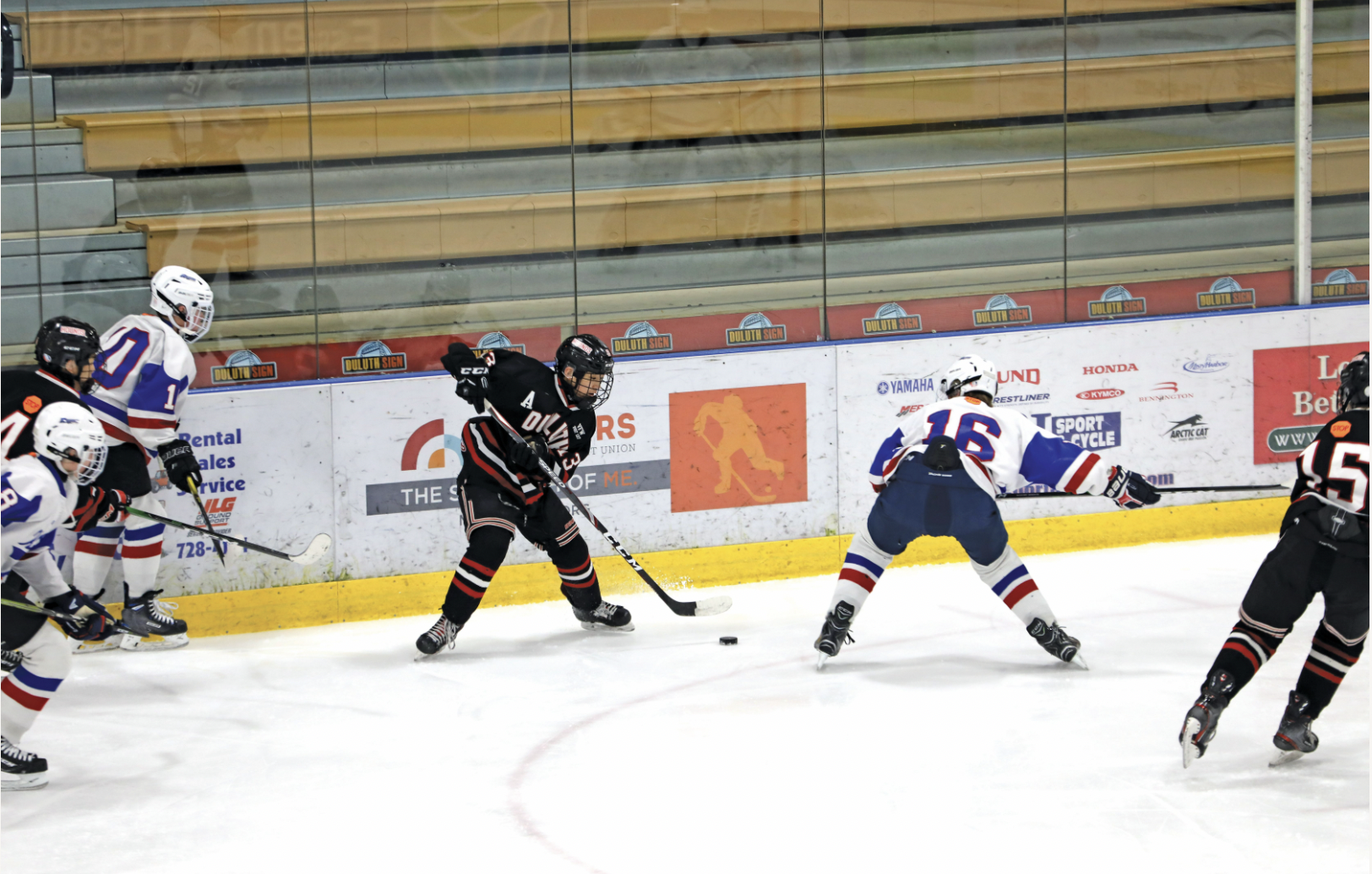Trick or Treat
Tips for Improving Puck Skills and Deception with Todd Knott
By: Shane Frederick
ASK TODD KNOTT about hockey hands, and he pivots right to the feet.
“I’m going to go in a different direction right away,” said Knott, the associate head coach for the Minnesota State men’s hockey team. “It’s amazing how much your skating affects how you handle a puck.”
Knott knows what he’s talking about. Now in his 13th season at Minnesota State, Knott has helped build the Mavericks into a perennial winner, one that captured six conference championships in the last seven seasons and made its first appearance in the NCAA Frozen Four last April.
Knott, who played college hockey at Bemidji State, says it takes work to polish puck-handling skills that can deceive defenders, but that work starts with skating and goes up from there. Here are a few tips from Knott on developing better puck skills:
SKATE, SKATE, SKATE
“First and foremost, your skating,” Knott said. “If you’re not a great skater on your edges, I think it’s a little more difficult to handle a puck, and so I’ll go right to the skating part of it.”
Think of the ability to play fast. You want to be able to do all of the things you want to do with the puck—whether that’s puck handling, shooting or deceiving defenders and goaltenders with fakes and dekes—at full speed. Slowing down only … slows you down.
“The game of hockey is too fast when you start thinking, ‘OK, I’m going to try this right now.’ You’re usually too late, and the puck’s going the other way. … I know that’s repetitive, and a lot of people talk about it. But I believe it’s so important at a young age that skating is No. 1 to develop the things that will help your puck skills later on.”
OFF-ICE COUNTS
“The great thing about hockey is you don’t have to be on an ice sheet to work on your puck-handling skills.”
You can spend your summers working on hand skills in the driveway, the garage or the basement. Set up cones or hockey gloves and work figure eights with a tennis ball. Work on your range from left to right or right to left.
“For kids, it’s just getting a feel of it—what it feels like to be on the toe of your stick, what it feels like to be on the heel of your stick. Keep your head up while you’re doing it because that’s a struggle for most players.”
Knott also believes in playing multiple sports and being an all-around athlete: “I don’t care if that’s baseball, golf, tennis where you’re working on your hand skills.”
DIG FOR DRILLS
Wondering what kind of drills you can do?
The good news, Knott says, is that all kinds of them are right at your fingertips online.
“It’s so great right now. You can go on USA Hockey where, I think, they do a really good job. And it’s not just USA Hockey, but you can take 3 minutes and go look at 25 different drills.”
The great part about that, he added, is that it costs virtually nothing to find some high-quality hockey training.
DON’T BE A ROBOT
When you are on the ice, there’s always time to work on puck skills.
Knott says he and the other Maverick coaches make sure players aren’t just going through the motions during pre-practice warmups and passing and shooting drills.
“We are very hard on our guys, even with drills to start practice, where you might think it’s robotic, where it’s a shooting drill. Even in those drills, you can show a little deception in passing and shooting, we remind guys to work on something specific and get better today with that.”
A little repetition can go a long way. Don’t stare down the teammate you’re passing to or the goal you’re shooting at. Work on no-look passes and no-look shots. Work on quickening your release and timing to keep defenders and goalies guessing.
“That takes vision; that takes stick skill. It’s in those moments where, if you do it over and over and over, and you get more comfortable with it, again, you’re playing fast, you’re not overthinking the game.”
DON’T FORGET THE D
While puck-handling skills always come in handy in the offensive zone, they’re just as valuable at the other end of the rink, especially in breaking out pucks.
“Without a doubt, deception can help lose a forechecker one-on-one. That’s nonstop repetitive throughout a game. We had a guy, Riese Zmolek, who was really, really good at that, whether that meant he was going to reverse a puck, eat a puck or put it inside his big body until he got help.”
Knott also recommends watching hockey games—and not just the highlights of great goals.
“Watch for deception and creativity. Whether it’s the NHL, college hockey, high school hockey, watch the game live. It’s incredible what you’ll pick up. … Whether it’s breaking pucks out, neutral zone, all the individual skills that a player needs to play at a high level, watching it over and over will help.”

